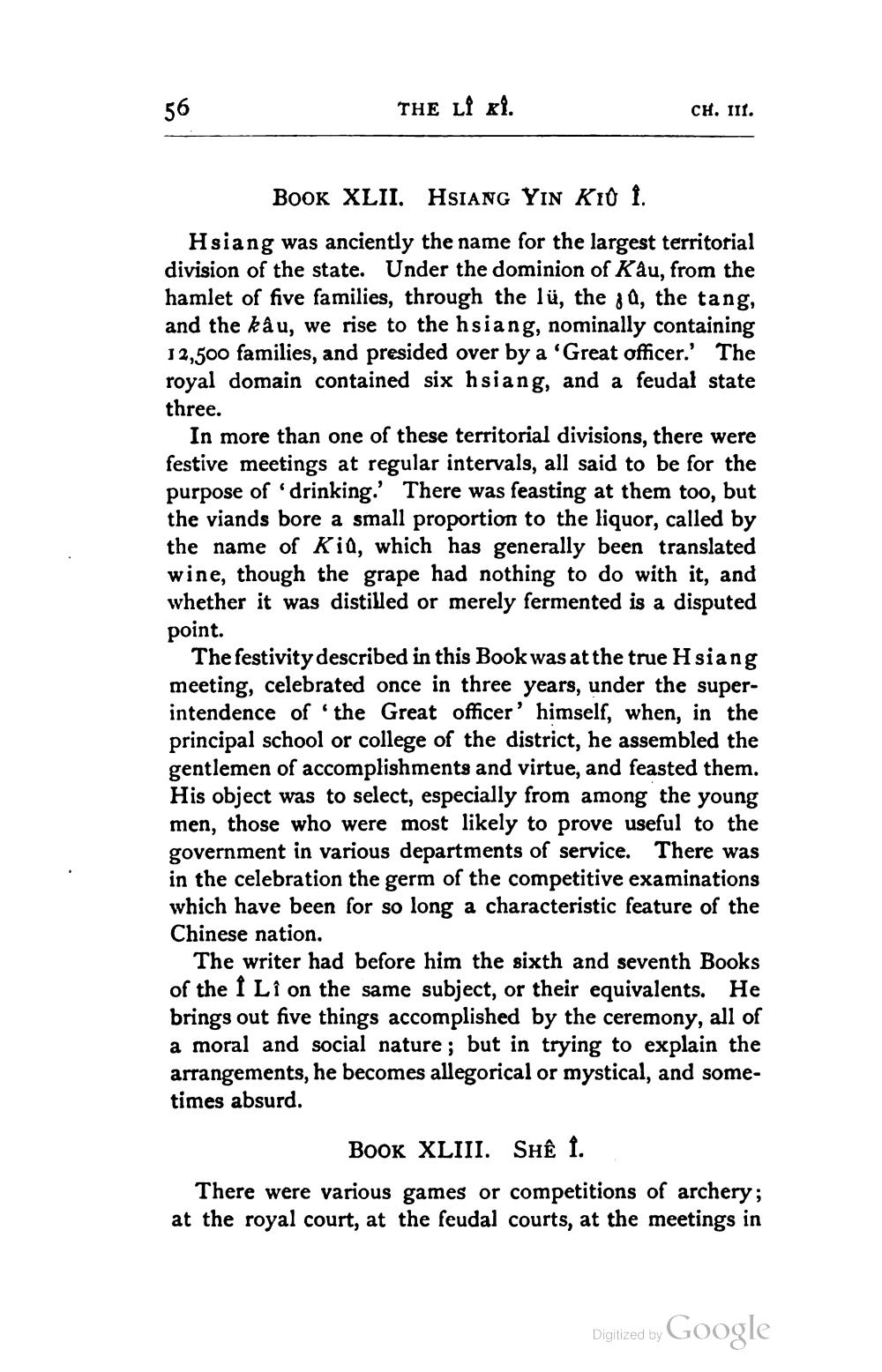________________
THE LÎ xl.
CH. 111.
BOOK XLII. HSIANG YIN K10 i. Hsiang was anciently the name for the largest territorial division of the state. Under the dominion of Kâu, from the hamlet of five families, through the lü, the jų, the tang, and the kâu, we rise to the hsiang, nominally containing 12,500 families, and presided over by a 'Great officer.' The royal domain contained six hsiang, and a feudal state three.
In more than one of these territorial divisions, there were festive meetings at regular intervals, all said to be for the purpose of drinking. There was feasting at them too, but the viands bore a small proportion to the liquor, called by the name of Kid, which has generally been translated wine, though the grape had nothing to do with it, and whether it was distilled or merely fermented is a disputed
point.
The festivity described in this Book was at the true H siang meeting, celebrated once in three years, under the superintendence of the Great officer' himself, when, in the principal school or college of the district, he assembled the gentlemen of accomplishments and virtue, and feasted them. His object was to select, especially from among the young men, those who were most likely to prove useful to the government in various departments of service. There was in the celebration the germ of the competitive examinations which have been for so long a characteristic feature of the Chinese nation.
The writer had before him the sixth and seventh Books of the I Lî on the same subject, or their equivalents. He brings out five things accomplished by the ceremony, all of a moral and social nature ; but in trying to explain the arrangements, he becomes allegorical or mystical, and sometimes absurd.
BOOK XLIII. SHÊ I. There were various games or competitions of archery; at the royal court, at the feudal courts, at the meetings in
Digitized by Google




